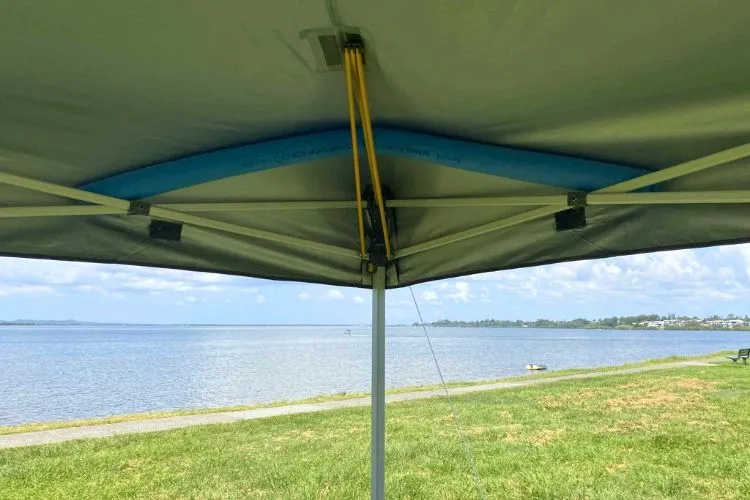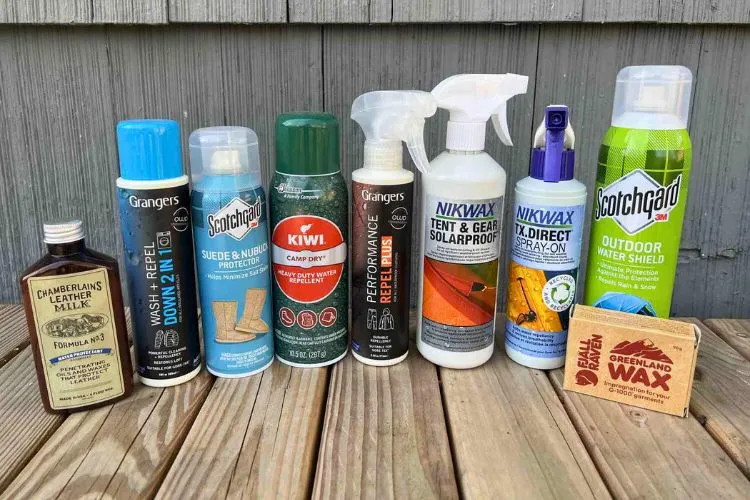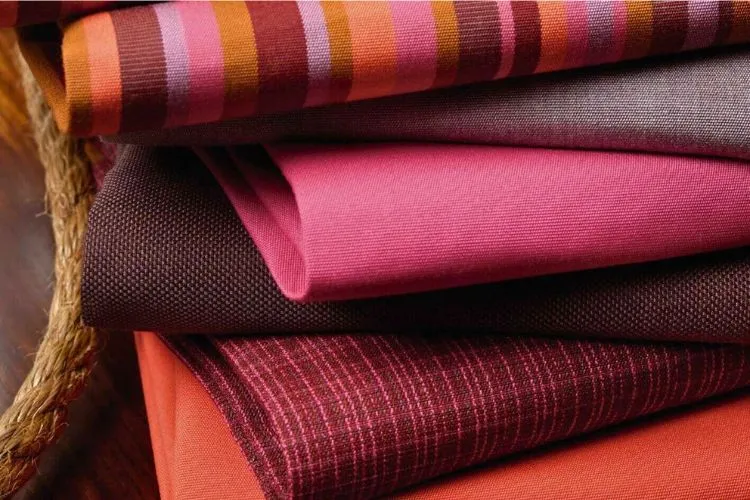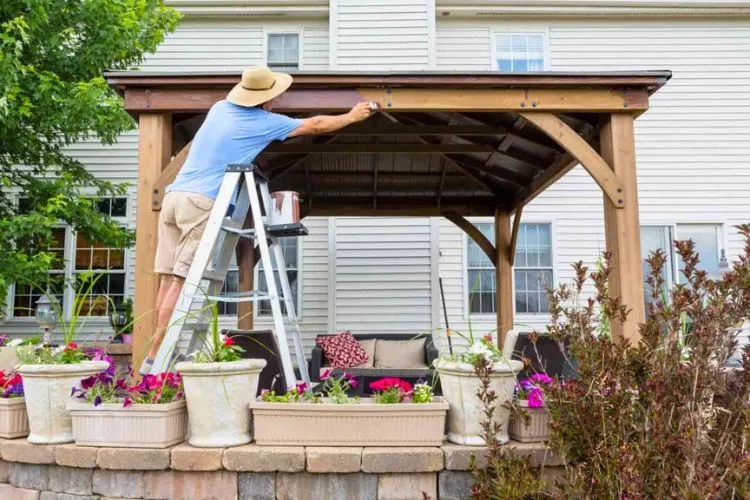Water pooling on a gazebo canopy is a familiar sight for many outdoor enthusiasts. What starts as a small collection of rainwater can quickly become a sagging, stressed structure at risk of damage or collapse.
This article will guide you through how to keep water from pooling on gazebo.

Contents
How To Keep Water From Pooling On Gazebo?
The design of some gazebos does not always promote adequate water runoff. When water pools, it exerts pressure on the fabric and frame, leading to stretching, fabric weakening, and possible decay of materials.
Moreover, the additional weight could lead to structural integrity issues, including bending or breaking of the frame.
Preventive Measures
Routine maintenance is key to preventing water from gathering on your gazebo canopy. A canopy should sit tight and secure, free from any debris that might cause water to collect.
Ensure the fabric remains taught and the framework maintains its intended shape. This simple attention to detail can significantly reduce the likelihood of water pooling.
Adding Support
Adding central support to your gazebo is one of the simplest ways to prevent water from pooling. A straight PVC pipe or a half-cut pool noodle placed atop the gazebo’s framework under the canopy can help the water slide off.
To install support, measure the distance between the gazebo frame’s opposing sides and cut your support material to size. Most importantly, ensure the support securely attaches and provides a gentle peak for water runoff.
Improving Drainage
Creating effective drainage is another proactive measure. Some canopy owners choose to add strips along the inside of the canopy to guide water towards the edges and away from the center.
These can be fashioned from fabric or other materials. The goal is to create channels that direct the water to where it can drain away naturally.
Applying Water Repellents
Water repellents can be another ally in your battle against pooling. Products available on the market can be sprayed or painted over the fabric, creating a waterproof barrier.

For best results, clean the canopy first, then apply the repellent evenly according to the manufacturer’s directions. Regular application is crucial, generally before the rainy season begins for most climates.
Professional Solutions
There are instances where professional help might be necessary. This is particularly true for larger, permanent gazebos or ones where DIY alterations could void warranties.
Professionals can assess your gazebo’s structure and recommend alterations such as adding additional gutters or tilting the frame for better water runoff.
Product Recommendations
When considering products, look for high-rated PVC pipes or pool noodles for support, drains or strips suitable for outdoor fabrics, and water repellents designed for use on outdoor furniture or marine products. These products should have strong customer feedback and proven durability.
Selecting the Right Fabric for Canopies
Selecting the right fabric for your gazebo canopy is essential to ensure it withstands various weather conditions while providing optimal protection and lasting durability. Here are key considerations:

- Waterproof Materials: Look for fabrics like polyester or canvas that have been treated with waterproof coatings. This ensures that rainwater beads up and rolls off rather than soaking through.
- UV Resistance: Fabrics with UV inhibitors protect against sun damage, preserving the color and integrity of the canopy. This is vital for areas exposed to intense sunlight.
- Durability: Heavy-duty materials such as acrylic or polyethylene are tear-resistant and can withstand wind and wear. Opt for high-denier fabrics for extra toughness.
- Breathability: Some fabrics offer added breathability, reducing the risk of mildew and making the gazebo more comfortable in hot weather. Mesh panels can provide ventilation without compromising protection.
- Maintenance: Consider ease of cleaning and resistance to staining. Fabrics that can be easily wiped down or machine washed offer convenience and longevity.
Choosing a gazebo canopy fabric that meets these criteria will ensure your outdoor space remains functional and inviting, rain or shine.
Regular Inspection and Maintenance
Regular inspection and maintenance of your gazebo are crucial for prolonging its lifespan and ensuring safety. Here’s a comprehensive checklist for your routine checks:

- Fabric Wear and Tear: Inspect the canopy fabric for any rips, tears, or thinning areas that could compromise its waterproof effectiveness and overall aesthetic. Look especially along seams and at connection points where tension is greatest.
- Rusting Frame: Examine the metal parts of the gazebo for signs of rust or corrosion. Early detection and treatment can prevent structural compromise.
- Water Pooling Areas: Identify any sagging or low points on the canopy where water might collect. Addressing these early can prevent damage and the need for more significant repairs.
- Loose Connections: Check all joints and connections for tightness. Wind and regular use can loosen these over time, leading to instability.
- Mold and Mildew: Look for any signs of mold or mildew growth on the fabric, which could indicate moisture problems that need attention.
Regular attention to these areas can help avoid unexpected damages, ensuring your gazebo remains a safe and beautiful addition to your outdoor space.
Frequently Asked Questions (FAQs)
How to keep water from pooling on a gazebo during DIY?
Ensure you provide adequate tension across the canopy, use supports to create an incline, and apply water repellent to the fabric. Monitor your gazebo, especially after bad weather, and make adjustments as necessary.
Can applying water repellent prevent water pooling on my gazebo?
Yes, water repellents create a barrier that can prevent water from soaking into the fabric, reducing the risk of pooling.
What are the best materials to use for adding support to prevent water pooling?
Durable materials, such as PVC pipes or high-quality pool noodles, work well. These materials should withstand the elements and provide enough rigidity to prop up the canopy effectively.
Conclusion:
In conclusion, preventing water from pooling on a gazebo canopy requires a mix of proactive measures and routine maintenance. By incorporating support structures, ensuring efficient drainage, and applying water repellents, you can significantly reduce the risk of water accumulation.
Regular inspections play a crucial role in identifying potential issues early, allowing for timely interventions. Choosing the right fabric for your canopy and adhering to a comprehensive maintenance schedule will also contribute to the longevity and performance of your gazebo.
By following these expert tips and tricks, you can enjoy a dry and structurally sound gazebo, come rain or shine.

Sergio Gomes, a passionate advocate for outdoor living and the male voice behind Shades Authority. With years of experience, Sergio is your trusted source for expert insights on gazebos, pavilions, cabanas, pergolas, and all things outdoor shade solutions. Join him on a journey to transform your outdoor spaces into stunning, functional retreats
